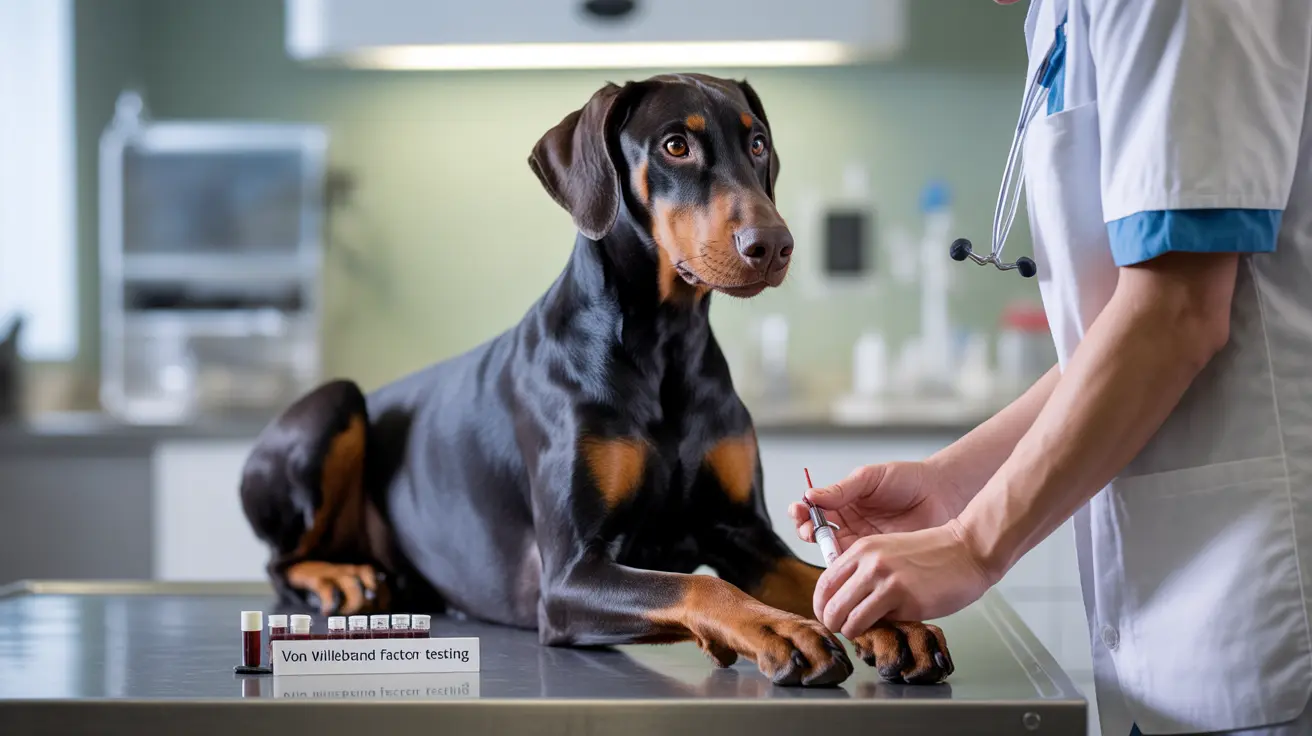Von Willebrand disease in dogs is the most common inherited bleeding disorder affecting our canine companions. This potentially serious condition occurs when dogs lack sufficient amounts of von Willebrand factor (vWF), a crucial protein that helps blood clot properly. Understanding this condition is essential for pet owners, especially those with breeds known to be at higher risk.
Whether you're a dog owner concerned about your pet's health or a breeder wanting to make informed decisions, this comprehensive guide will help you understand everything you need to know about von Willebrand disease in dogs.
What is Von Willebrand Disease?
Von Willebrand disease affects the blood's ability to clot properly. When a healthy dog experiences an injury, platelets naturally cluster together to form a blood clot, preventing excessive bleeding. The von Willebrand factor protein acts like a glue, helping platelets stick together and attach to blood vessel walls. Dogs with this condition either don't produce enough of this protein or produce a defective version.
Types of Von Willebrand Disease
There are three distinct types of the condition, each varying in severity and affecting different breeds:
- Type 1: Most common form, characterized by reduced levels of normal vWF
- Type 2: Features abnormally structured vWF protein
- Type 3: Most severe form, with almost complete absence of vWF
Common Signs and Symptoms
Dogs with von Willebrand disease may show various signs of abnormal bleeding, including:
- Excessive bleeding from minor cuts or scrapes
- Frequent nosebleeds
- Bleeding gums
- Blood in urine or stool
- Prolonged bleeding during heat cycles
- Extended bleeding during routine procedures like nail trimming
Breeds Most Affected
While over 50 dog breeds can be affected by von Willebrand disease, some breeds are particularly susceptible:
- Doberman Pinschers
- Scottish Terriers
- Shetland Sheepdogs
- German Shepherds
- Standard Poodles
- Pembroke Welsh Corgis
Diagnosis and Testing
Veterinarians typically diagnose von Willebrand disease through several methods:
- Blood tests measuring vWF levels
- DNA testing to identify genetic mutations
- Buccal mucosal bleeding time tests
- Complete blood count and coagulation profiles
Treatment and Management
While there's no cure for von Willebrand disease in dogs, proper management can help affected pets live normal, healthy lives. Treatment approaches include:
- Avoiding medications that interfere with blood clotting
- Taking precautions before surgery or dental procedures
- Administering synthetic hormones to boost vWF levels when needed
- Using plasma transfusions in severe cases
- Maintaining careful monitoring during any medical procedures
Prevention and Breeding Considerations
Since von Willebrand disease is inherited, responsible breeding practices are crucial for reducing its prevalence:
- Screen breeding dogs for the condition
- Avoid breeding affected animals
- Consider genetic counseling before breeding at-risk dogs
- Regular health monitoring of offspring from affected lines
Frequently Asked Questions
What are the main symptoms of von Willebrand disease in dogs?
The main symptoms include excessive bleeding from minor injuries, spontaneous nosebleeds, bleeding gums, blood in urine or stool, and prolonged bleeding during surgical procedures or heat cycles.
How is von Willebrand disease diagnosed in dogs, and what tests are used?
Diagnosis involves blood tests to measure vWF levels, DNA testing for genetic mutations, buccal mucosal bleeding time tests, and complete blood count analysis. Your veterinarian may use multiple tests to confirm the diagnosis.
What breeds of dogs are most likely to have von Willebrand disease?
Doberman Pinschers, Scottish Terriers, Shetland Sheepdogs, German Shepherds, Standard Poodles, and Pembroke Welsh Corgis are among the breeds most commonly affected by this condition.
How can pet owners manage and prevent excessive bleeding in dogs with von Willebrand disease?
Pet owners should work closely with their veterinarian, avoid medications that affect blood clotting, take special precautions during medical procedures, and maintain careful monitoring during routine activities that could cause injury.
What are the implications of von Willebrand disease for the lifespan and quality of life of affected dogs?
With proper management, most dogs with von Willebrand disease can live normal, full lives. However, they require careful monitoring and may need special medical considerations throughout their lifetime.






